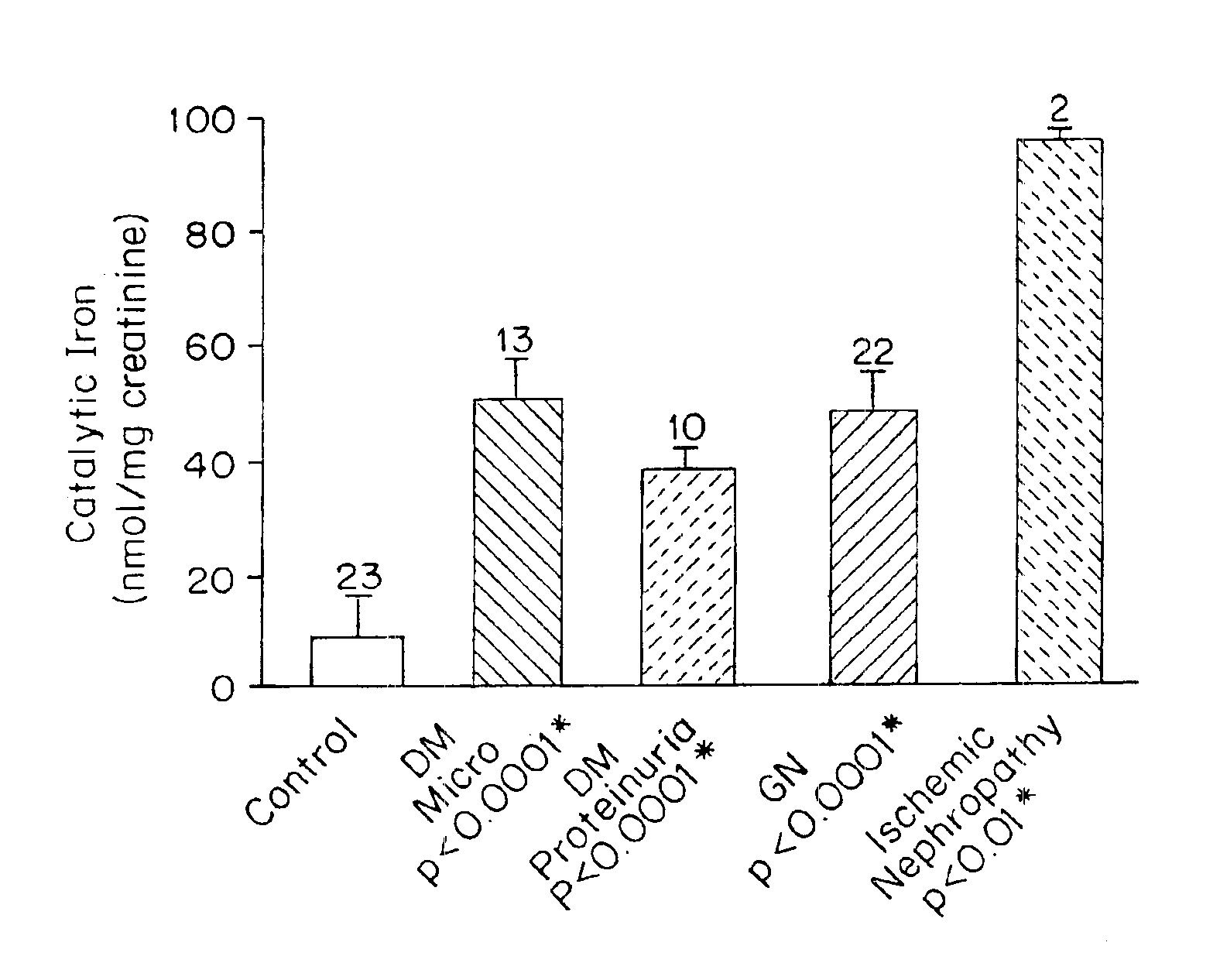Diagnosis and treatment of human kidney diseases
a human kidney and disease technology, applied in the field of human kidney disease diagnosis and treatment, can solve the problems of insufficient diagnostic methods, animal models suffer from a number of limitations, and the above mentioned, and achieve the effects of preventing the progression of kidney disease, and reducing the severity of kidney disease in a human
- Summary
- Abstract
- Description
- Claims
- Application Information
AI Technical Summary
Benefits of technology
Problems solved by technology
Method used
Image
Examples
example 1
Urinary Catalytic Iron in Patients with Kidney Disease
Selection of Patients with Kidney Disease
[0101]Human patients (n=70) were used in these studies. Controls were healthy human patients with no history of kidney disease, hypertension, diabetes or other diseases that affect the kidney. Males and females were used in the studies. Ages of the human patients ranged from 4 years of age to 70 years of age. Ethnicity of the patients included Caucasians, African-American and Hispanics.
[0102]Kidney disease was detected in patients by the presence of an abnormal amount of protein in the urine and / or an abnormal renal function. An abnormal amount of protein in urine is an amount of total protein greater than about 0.15 g / 24 h measured by an adaptation of pyrogallol red-molydate method described by Fujita, Y., et al., Bunseki Kgaku 32:379-386 (1983), the teachings of which are hereby incorporated by reference in their entirety. Many patients, as part of their routine work up, had received kid...
example 2
Treatment of Patients with Kidney Disease with an Iron Chelator
Selection of Patients with Kidney Disease
[0155]The diagnosis of the kidney disease was made by performing a kidney biopsy and included patients with membranoproliferative glomerulonephritis, membranous nephropathy, focal segmental sclerosis, IgA nephropathy, and diabetes as described above.
Iron Chelator Treatment of Patients with Kidney Disease
[0156]Patients with kidney disease who had abnormally high urinary protein were treated with the iron chelator deferiprone (1,2-dimethyl-3-hydroxypyrid-4-one) (L1). Deferiprone was synthesized as previously described capsule (Kontoghiorghes A. J., et al., Inorganica Chimica Acta 136:L11-L12 (1987), the teachings of which are hereby incorporated by reference in it entirety) and formulated into capsules containing 500 mg of deferiprone per capsule.
[0157]Urinary protein and serum creatinine was measured as described above before the administration of deferiprone. Patients were treated...
PUM
| Property | Measurement | Unit |
|---|---|---|
| body weight | aaaaa | aaaaa |
| body weight | aaaaa | aaaaa |
| body weight | aaaaa | aaaaa |
Abstract
Description
Claims
Application Information
 Login to View More
Login to View More - R&D
- Intellectual Property
- Life Sciences
- Materials
- Tech Scout
- Unparalleled Data Quality
- Higher Quality Content
- 60% Fewer Hallucinations
Browse by: Latest US Patents, China's latest patents, Technical Efficacy Thesaurus, Application Domain, Technology Topic, Popular Technical Reports.
© 2025 PatSnap. All rights reserved.Legal|Privacy policy|Modern Slavery Act Transparency Statement|Sitemap|About US| Contact US: help@patsnap.com


